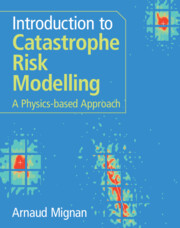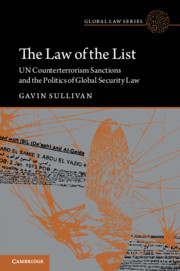Refine search
Actions for selected content:
11 results
Multi-Risk Governance of Solar Radiation Modification
-
- Journal:
- European Journal of Risk Regulation , First View
- Published online by Cambridge University Press:
- 10 July 2025, pp. 1-17
-
- Article
-
- You have access
- Open access
- HTML
- Export citation
Risk Governance, State Capacity, and Critical Human Security: Evolution of Risk Governance in Response to Systemic Risk in the UK and South Korea
-
- Journal:
- Social Policy and Society , First View
- Published online by Cambridge University Press:
- 16 April 2025, pp. 1-14
-
- Article
-
- You have access
- Open access
- HTML
- Export citation
6 - CAT Risk Management
- from Part III - CAT Risk Management
-
- Book:
- Introduction to Catastrophe Risk Modelling
- Published online:
- 08 November 2024
- Print publication:
- 21 November 2024, pp 235-275
-
- Chapter
- Export citation

Introduction to Catastrophe Risk Modelling
- A Physics-based Approach
-
- Published online:
- 08 November 2024
- Print publication:
- 21 November 2024
-
- Textbook
- Export citation
An Attribute Perspective on Regulatory Regimes in Risk Governance
-
- Journal:
- European Journal of Risk Regulation / Volume 15 / Issue 3 / September 2024
- Published online by Cambridge University Press:
- 26 October 2023, pp. 656-664
-
- Article
-
- You have access
- Open access
- HTML
- Export citation
Governing Risk Through Forced Confinement: Clawback of Pre-Pandemic Reforms
-
- Journal:
- Canadian Journal of Law & Society / La Revue Canadienne Droit et Société / Volume 38 / Issue 2 / August 2023
- Published online by Cambridge University Press:
- 15 September 2023, pp. 223-244
-
- Article
-
- You have access
- Open access
- HTML
- Export citation
1 - Introduction to Enterprise Risk Management
-
- Book:
- Quantitative Enterprise Risk Management
- Published online:
- 28 July 2022
- Print publication:
- 05 May 2022, pp 1-38
-
- Chapter
- Export citation
Ten new insights in climate science 2020 – a horizon scan
-
- Journal:
- Global Sustainability / Volume 4 / 2021
- Published online by Cambridge University Press:
- 27 January 2021, e5
-
- Article
-
- You have access
- Open access
- HTML
- Export citation

The Law of the List
- UN Counterterrorism Sanctions and the Politics of Global Security Law
-
- Published online:
- 24 April 2020
- Print publication:
- 23 April 2020
4 - Complexity in the Courts: the Spatiotemporal Dynamics of the List
-
- Book:
- The Law of the List
- Published online:
- 24 April 2020
- Print publication:
- 23 April 2020, pp 250-304
-
- Chapter
- Export citation
ERM for insurance companies – adding the investor's point of view
-
- Journal:
- British Actuarial Journal / Volume 16 / Issue 2 / 25 November 2011
- Published online by Cambridge University Press:
- 13 October 2011, pp. 341-384
-
- Article
- Export citation
